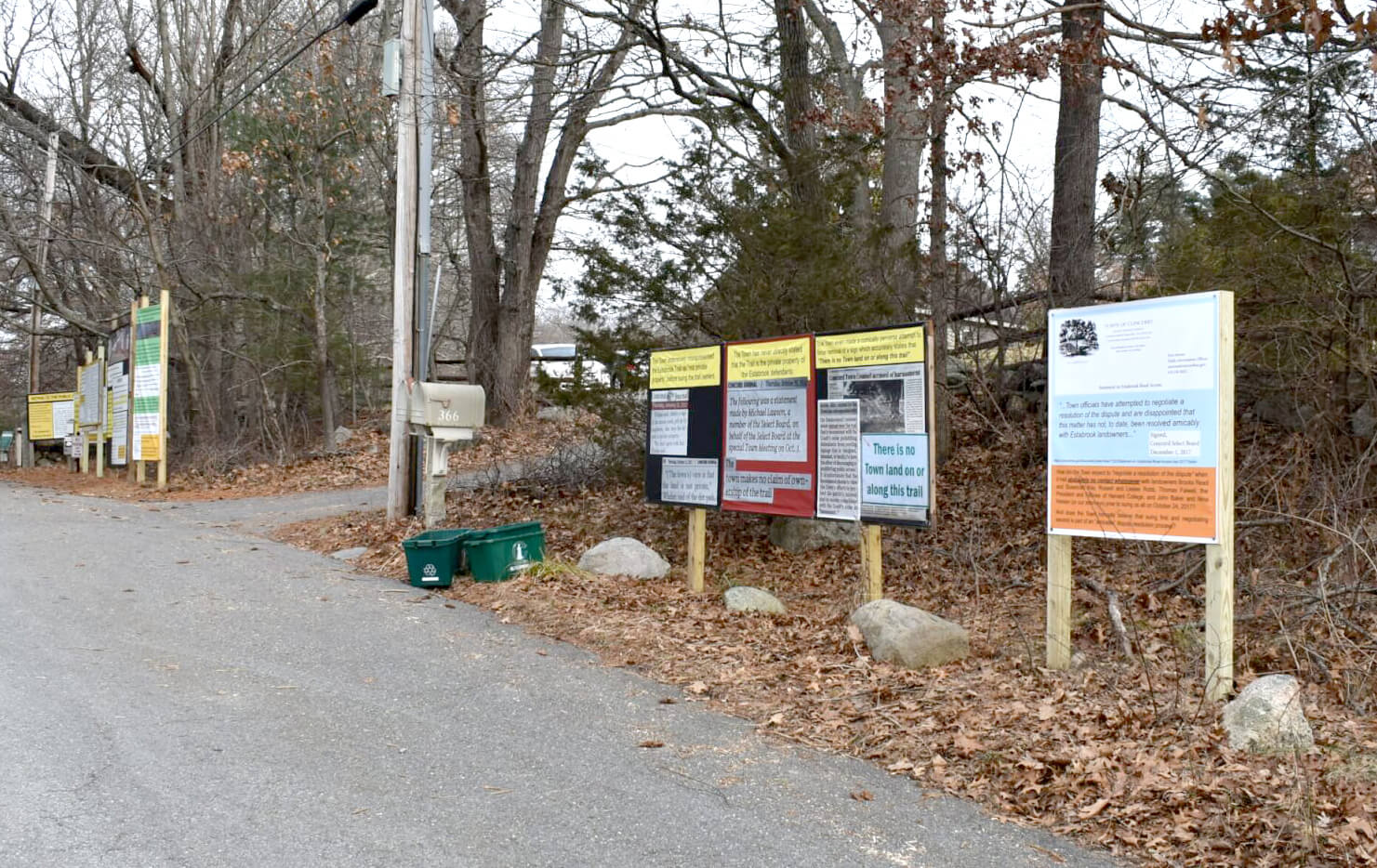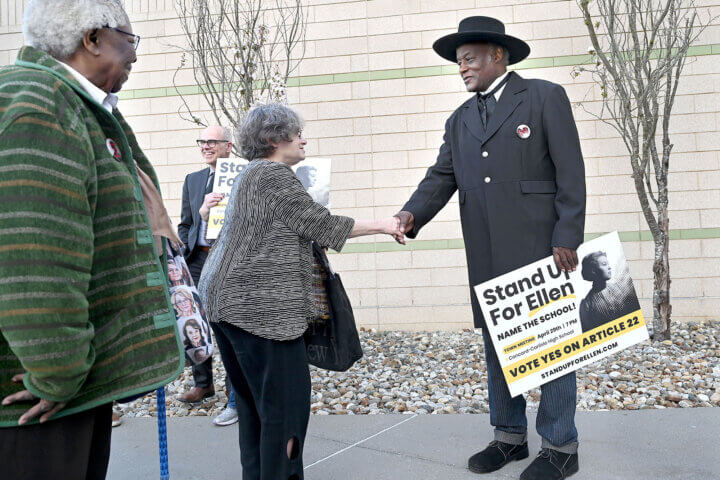Where the pavement comes to an end on Estabrook Road, outside enthusiasts from dog walkers to cross-country skiers enter New England woods, as people have for centuries.
Access to the mostly privately owned conserved land that is usually open to the public is a bone of contention between Concord and landowners.
Five or six plainly marked parallel parking spaces on the east side of the road allow visitors to pull off safely. A knee-high sign reads, “Please keep dogs out of gardens.”
Across the road, a plethora of colorful signs, some almost twice the height of a human, stand out. They exhibit details of a court case begun in 2020, copies of emails and more.
Over the years, property owners have blocked off the end of Estabrook Road from time to time. Currently, the well-maintained white gate, with a section for vehicles and another for pedestrians, stands open.
The town filed a suit in Land Court because it wanted to affirm the public’s access to the road and to prohibit landowners along the way from interfering with access from Estabrook Road, according to an email from Town Manager Kerry Lafleur. The town proved its case and won.
The defendants, the property owners, appealed.
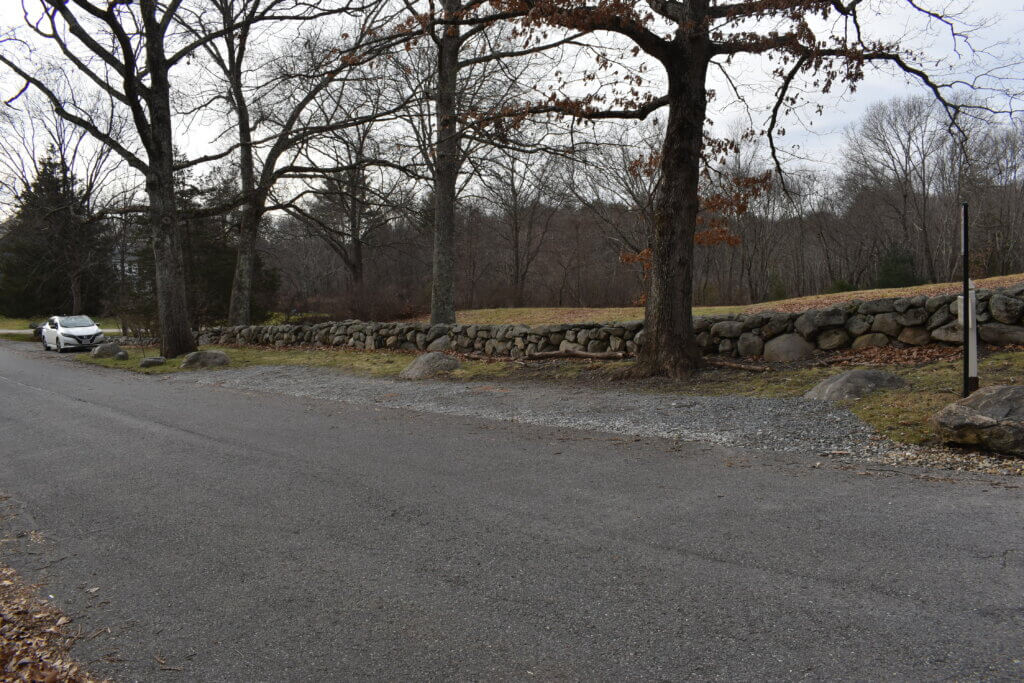
They include Neil Rasmussen, who installed the parking spaces at his own expense; Brooks Read, who installed the large signs; Read’s spouse, Susannah Kay; and other landowners with property along the northern part of Estabrook Road.
Read is passionate when he discusses the case. The town doesn’t maintain the way. If it is called a “road,” that means it must be open to vehicles, he said.
The trail is wide, but rough and not passable for passenger cars.
Estabrook Road past the pavement was never a public way, he said. The woods road was used by property owners to access their land for things like a lime mine and kiln, as well as logging operations.
So far, the town has spent more than $1.6 million in legal costs to ensure the public can walk the trail.
A July 2020 injunction prevented the defendants from blocking the road while the case was pending. The trial was held in June 2021, final arguments took place in October 2021, and in November 2022, Land Court found in the town’s favor.
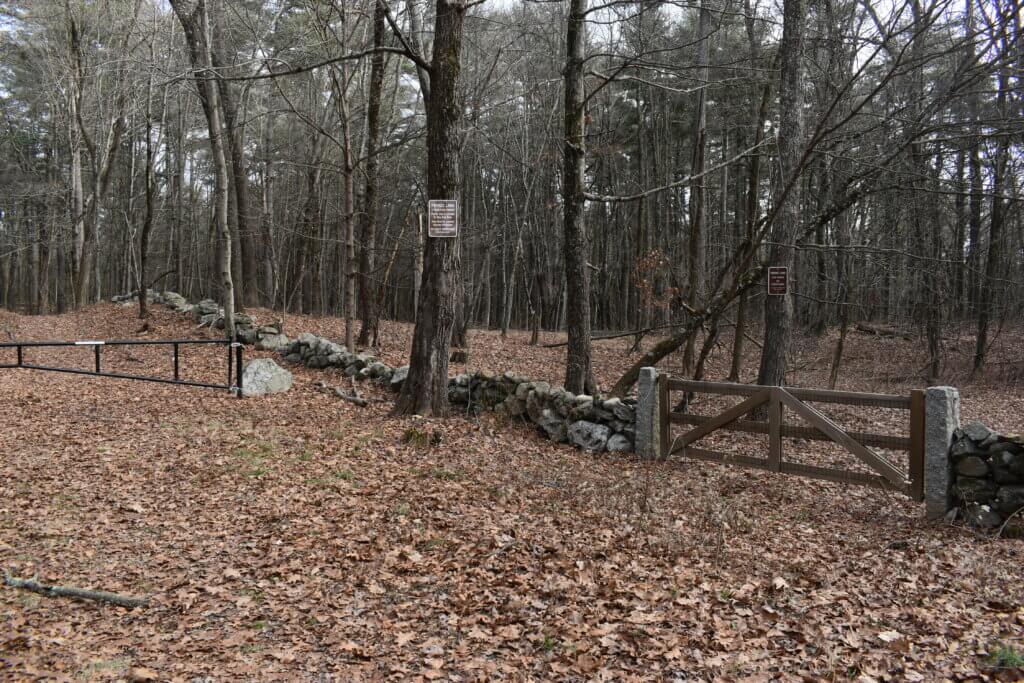
The defendants appealed, and both sides have filed briefs in the Appeals Court.
The appeals point to 18th and 19th century documents to support claims. Henry David Thoreau and Ralph Waldo Emerson’s descendants are quoted. Copies are available on theconcordbridge.org.
The case is only about the first part of the way past the pavement’s end, said Lee Robb, one of two landowners involved in the case who spoke with The Bridge. The Robb family has owned land on Monument Street for over 100 years, extending back into the Estabrook Woods area.
That land is now the Pippin Tree Land Trust and is in conservation. It is open for visitors except when something dangerous, like logging, is going on. Then, the pedestrian gate from Estabrook Road is closed until conditions are safe, said Robb.
Some tree thinning will be done soon, she said.
Harvard University, which owns land in Estabrook Woods, has an agreement with the town allowing limited public access along the trail. Dogs must be leashed.
In the meantime, Read continues to monitor who is using Estabrook Road.
After entering the gate installed by Rasmussen at the pavement’s end, visitors go along a clearly defined path. On one side is a tall stockade fence, shielding the Rasmussen property from view.
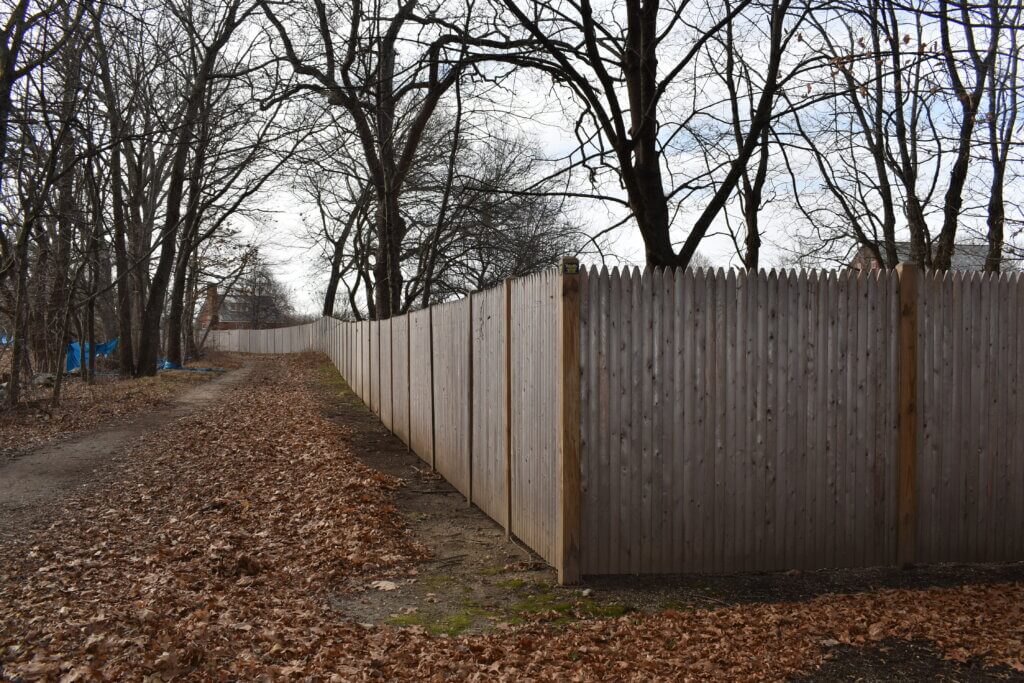
The fence went up after the home was listed on a website as a place to see, Read said.
Signs large and small dot Read’s side of the dirt road. Weathered, blue tarps stretch from tree to tree along a stone wall and, as the signage promises, surveillance cameras stand watch.
They work. Read showed a video of a man moving rocks from the stone wall.
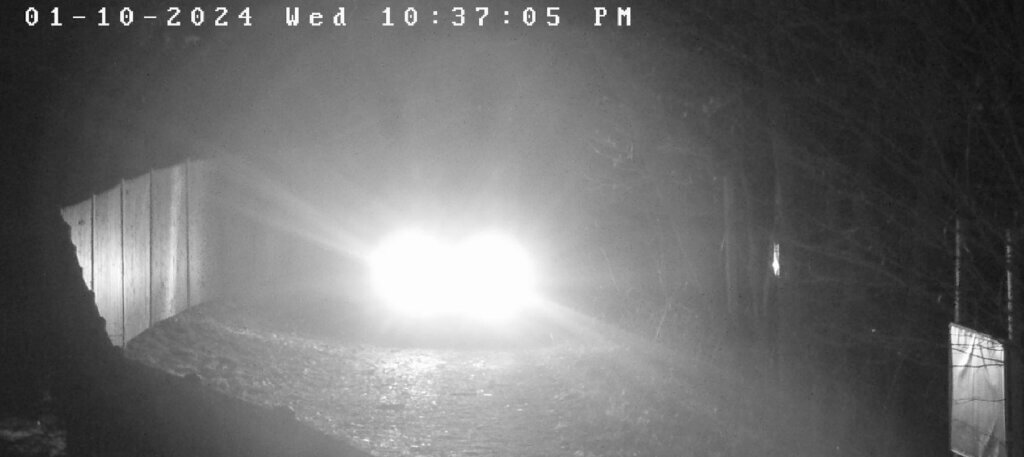
Pictures taken after dark on January 10 show an SUV-type vehicle heading south on the trail between the Read and Rasmussen properties. “So long as the Land Court’s ruling stands, there is nothing anyone can do to stop such use, and I would expect it will only escalate with time,” Read wrote in an email to The Bridge.
Dogs getting into pastures and conservation land are another concern of the landowners. Read, while speaking with The Bridge, took a photo of a dog walking along the trail beside its owner. The dog was not leashed.
In 2017, loose dogs disturbed a coyote den near the trail. Several dogs were wounded.
A sign installed by the Estabrook Woods property owners at the entrance to the trail specifies that dogs must be on leash. The town dog bylaw specifies dogs must be leashed or under the control of their owner.
Read said he intended to send the town many pictures of unleashed dogs.
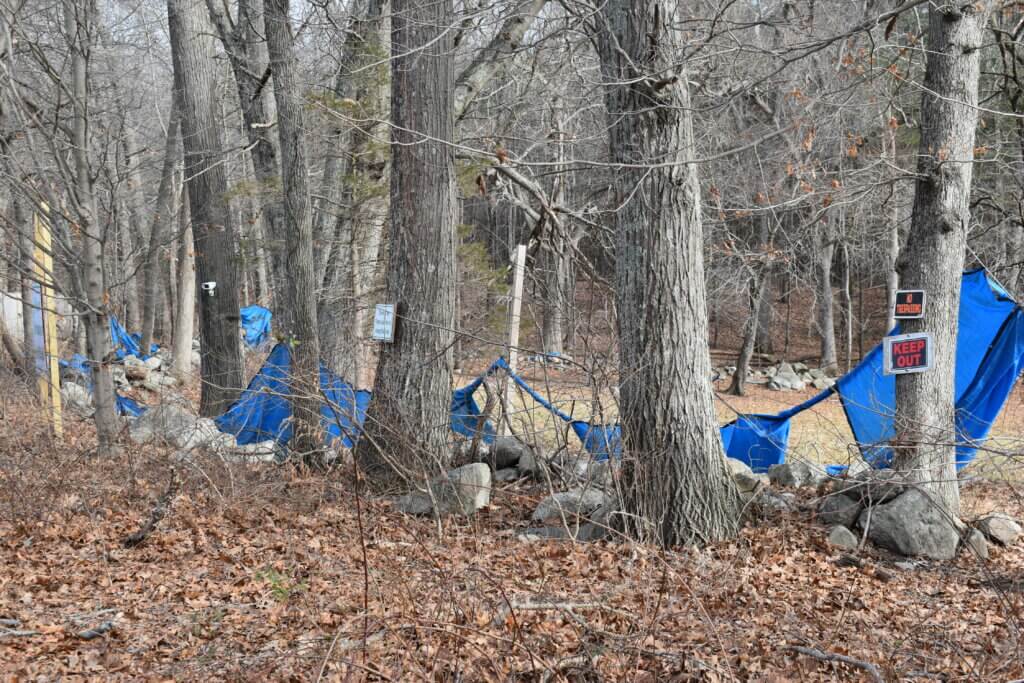
Around 2016, he became concerned about the number of visitors, saying sometimes the road was parked up on both sides before the parking spaces went in.
Once, because of a public safety incident involving someone injured in the woods, Read could not access his driveway.
While the town does not maintain these off-road areas, they are accessible to first responders. The Fire Department has two off-road vehicles, said Chief Thomas Judge. Each can transport a supine patient out of the woods to an ambulance.
The department modifies one of these by installing a track for winter months. The vehicles are registered and can be driven from either fire station or trailered to an emergency, he wrote.
No date has been set to hear arguments in the Appeals Court.


